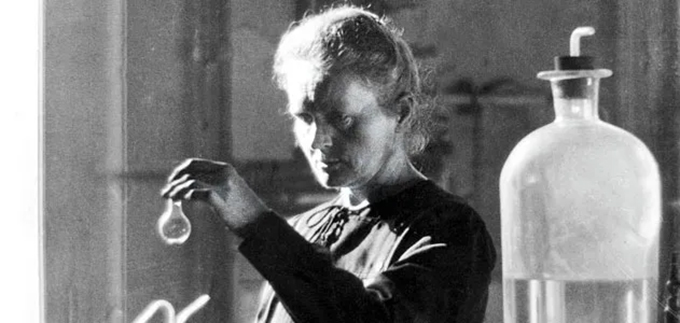
Do girls have little interest in science? This could be suggested by their persistent under-representation in sectors and professions dedicated to these disciplines . However, research in sociology shows that it is not for lack of taste or skills that they are relatively absent from these fields .
An explanation would rather lie in the social norms which influence girls in their choices. If the family and the school play an important role in the incorporation of these norms, culture, through the representations and models it conveys, contributes to structuring the relationship that adolescent girls have with science and to influencing their choices of science. ‘orientation. This is what the results of the survey initiated and supervised by the Lecture Jeunesse association , supported by the Ministry of Culture, show.
By surveying 45 high school girls who love mathematics, we sought to answer the following questions: what cultural content do girls who love science consume? What relationship do they have to this content and how does it shape their representations of science? Are there female role models , real or fictional, who inspire and encourage these girls to pursue scientific paths?
In the context of this research, the term “science” designates all the disciplines relating to formal sciences, matter and life, as opposed to the human and social sciences. The survey examines all cultural supports (written and audiovisual content, museums, games, amateur practices, etc.) which disseminate science, a group referred to as scientific culture.
Scientific hobbies, a minority practice among adolescents
The scientific culture of high school girls is poorly developed: of the 45 girls interviewed, only nine say they have regular scientific hobbies. The influence of social origin on these activities is notable: girls from advantaged backgrounds with the most economic and cultural capital are more likely to have scientific hobbies.
The study also reveals that, although a taste for literature and a taste for science are not incompatible, reading scientific works remains rare. In fact, while three-quarters of girls say they like reading and spend time reading, only five of them read science books. Scientific reading is therefore in the minority, even among avid readers.
Invited to look for science in all the books, films or series they know, the girls identify a few titles (science fiction films, scientist biopics, series, anime , etc.) that they associate with the theme.

Some examples of titles that girls associate with science.
However, teenage girls have little attachment to this content, which they only watch occasionally. They do not consider them as science learning supports, which contrasts with the didactic use made of them by boys who, as researcher David Peyron has shown, perceive “the imaginary world as a place of experimentation knowledge” .
Finally, when adolescent girls appreciate this content, it is rarely because of its scientific dimension. Shadow Figures , which tells the story of three African-American women engineers working for NASA, is for example the “favorite film” of one of the teenage girls interviewed. However, the latter makes it clear that her interest in the film is not due to its scientific dimension:
“I think I also like it a lot because there is a connection with society: it’s black women, it’s a fight… it’s not just science. I think a film or a book just about science… I don’t know if that would be enough for me. »
Distance from scientific hobbies fuels a feeling of incompetence in science
For most teenage girls, anything related to science is school work and is not seen as a possible source of entertainment. Some girls even vehemently reject the idea of having an extracurricular passion for science.
Through this rejection, there is a distancing from the repulsive figure of the geek “who likes math, manga and video games” and who devotes his free time to science. For girls, placing science outside the field of leisure thus amounts to rejecting the masculine attribution that accompanies the investment in science.
This distancing prevents the birth of a feeling of familiarity with the sciences which nourishes self-confidence in these disciplines. Furthermore, scientific culture is an implicit expectation of academic sectors and then professional scientific circles. Ignorance of certain scientific cultural references is seen as a failure and excludes girls from group dynamics in these environments.
Ultimately, this fuels the feeling among girls that their work will never stand up to the accumulated culture of boys, and at the same time leads their male peers and colleagues to judge them as incompetent.
Investing power including culture through female role models
Through the identification mechanisms they enable, cultural objects have the power to inspire young girls by offering them feminine role models. However, in its current state, scientific culture is exclusionary: women are invisible or represented in a stereotypical way.
The rare representations of women scientists are also often counterproductive. Figures too impressive to arouse identification, women with an innate gift for science or who had to face adversity to follow their vocation: female representations in contemporary cultural offerings convey the idea that women scientists cannot be ordinary, happy women.
The creation of local models is therefore fundamental: adolescent girls need to meet ordinary and accessible women scientists. The major role that fiction can play is still insufficiently invested: effective female models to make girls want to get involved in science have yet to be invented.
Author Bio: Clemence Perronnet is a Sociology Researcher at the Phare Agency attached to the Max Weber Center (UMR 5283) AT ENS de Lyon
This article was co-written by Clémence Perronnet, Lydie Laroque and Aurore Mantel (from the Lecture Jeunesse association ).
